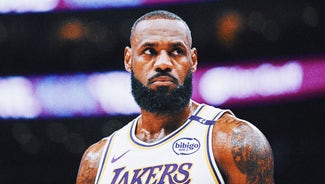
Shaq vs. Wilt: Power-point presentation
Who's better, Shaq or Wilt?
This question has been raised by several readers — the latest being Brad from Thousand Oaks, Calif. But the answer is more complex than it might appear. That's because, during his early career, Shaq weighed less than 300 pounds, and later on was so huge that only a cattle scale could adequately record his mass. Also, over the course of Chamberlain's 14-year career, his on-court role went through several alterations: In his early seasons, he was a gargantuan scorer and rebounder, then he decided to become the league's leading assist-maker and finally he became a defensive ace.
However, despite these wide disparities, certain meaningful comparisons can be made between the two most physically dominant big men in NBA history.
For starters, their physical dimensions are comparable. Although both are listed as being 7-1, Wilt was actually 1/16 of an inch taller than this. Plus, Wilt was also at least 30 pounds heavier than his listed 275 pounds — which still would give Shaq the bulk advantage.
Both of these guys were so incredibly off-the-charts strong that it's almost impossible to rank them in this category -- although Shaq would probably rate a slight edge simply because of his extra weight.
It's certain, however, that Wilt had much bigger and stronger hands. On several noteworthy occasions he rose for a dunk with a helpless defender clinging to the ball — and lifted both the ball and his opponent with ease. No surprise, then, that Chamberlain was therefore more adept at controlling the ball with one hand than was Shaq.
Moreover, there's likewise no doubt that Wilt was much faster -- from baseline to baseline -- and much quicker -- in a circle of influence with perhaps a 10-foot diameter -- than O'Neal.
So, too, was Chamberlain a much superior rebounder — averaging 22.9 for his career, to Shaq's 11.3. Because of his lateral and vertical quickness and his powerful hands, Wilt was at least a four-space rebounder, while Shaq is at best a two-space rebounder. In addition, Shaq's inability to jump quickly allows smaller, bouncier players to beat him to too many rebounds — a flaw that has become more acute as he ages.








